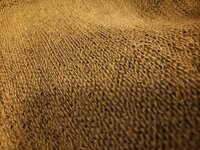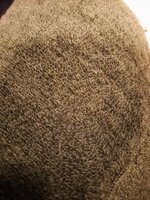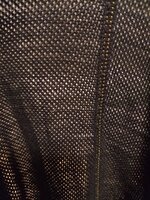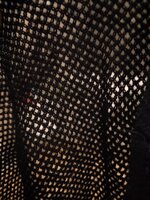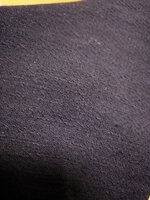- Joined
- Jan 18, 2016
- Location
- North Sentinel Island
Yes pretty much. I find that I only use wristwarmers in severe cold when I need to adjust layers depending on activity and output. Don't really use them outside winter.[...] I can imagine they serve a similar purpose as a slightly long sleeve with thumb holes? [...]
- Wool sweather, weight depending on season. Aclima or Devold: Expedition or Combat series.
No, it's me mixing up names...Quick gear question - do Devold do a Combat series? I can't see it on their site ... do they have a dedicated military website?



Gear selection should be driven by the weather and terrain you expect to encounter and be weighed against your preference and acceptance of risk and discomfort. Clothing and equipment in the hunting world has finally started to catch up to the quality of stuff that has existed in mountaineering for a long time.
[...]
Not really. I think ColeyG formulated it a lot better and shortert than I would have...Now that you've covered the top layer, do you want to cover the lower half also?
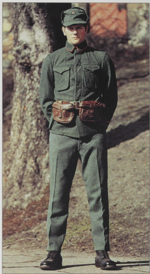
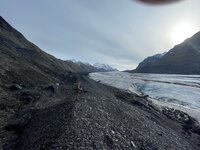
Another couple great options for a super lightweight crampon is the Petzl Leopard LLF/FL, or the Irvis Hybrid. Can add anti balling plates to the Leopard series also. Amazingly light weight.How about some discussion of a lightweight high angle safety kit. I feel like a common problem and/or scenario here in AK that a lot of mountain hunters run into is not being able to recover animals like goats and sheep that tumble into technical terrain.
Many times a simple steep step or exposed traverse is all that keeps the hunters from being able to get to and/or retrieve the animal.
Obviously having some self control and not taking shots at animals in spots where they are likely to fall into bad terrain is the best bet, but I am sure we all know that despite out best efforts sometimes things can go sideways.
I've taken a lightweight rappelling kit into goat country a few times and have yet to use it, but here is my minimum kit for being able to rappel into a gully or over a steep step and/or rig a static safety line to protect a traverse or ascent out of a steep spot.
1. Aluminum Crampons. Camp USA xlc490 (21.5oz)
2. Lightweight aluminum ice axe. Grivel Airtech Racing cut down to 14" (15oz)
3. Lightweight harness. Black Diamond Couloir (3.7oz)
4. Belay rappel device. Petzl Reversino (1.7oz)
5. 100' of 6mil cord (23.6oz)
6. 100' of P cord (10oz)
7. One locking carabiner. Black Diamond Vaporlock (1.8oz)
8. Misc cordage and webbing for build anchorage (12oz)
With this basic kit weighing about 5.5lbs I feel pretty good about being able to safely navigate getting into, out of or over a short "technical" section of terrain or to make multiple rappels in medium to high angle terrain to access easier terrain below.
The most important component by far is the knowledge and judgement necessary to be able to find and build safe anchorage and identify things like overhead hazard, sharp edges, etc. It should be noted that I am also using some of this gear outside of manufacturer's recommendations and guidelines like rapping and/or ascending on a single 6 mil strand etc. I also wouldn't use this approach in anything approaching vertical terrain.
Finding good natural anchors like trees, large, stable rocks, etc. is often the biggest challenge in most of the alpine terrain where I have considered the need for this type of kit in the past.
View attachment 372375
Very interesting.How about some discussion of a lightweight high angle safety kit. I feel like a common problem and/or scenario here in AK that a lot of mountain hunters run into is not being able to recover animals like goats and sheep that tumble into technical terrain.
[...]
1. Aluminum Crampons. Camp USA xlc490 (21.5oz)
2. Lightweight aluminum ice axe. Grivel Airtech Racing cut down to 14" (15oz)
3. Lightweight harness. Black Diamond Couloir (3.7oz)
4. Belay rappel device. Petzl Reversino (1.7oz)
5. 100' of 6mil cord (23.6oz)
6. 100' of P cord (10oz)
7. One locking carabiner. Black Diamond Vaporlock (1.8oz)
8. Misc cordage and webbing for build anchorage (12oz)
[...]

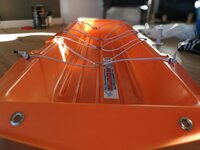
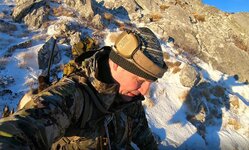
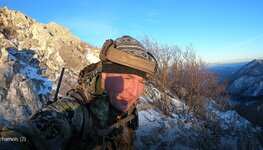
With the exception of the baselayer, almost everything is synthethic. Either waterproof, windproof, wind resistant or wicking. I like fabrics that are windresistant and duplicate the comfort of cotton without holding water.Wondering why you don't use the synthetics? Looks like your pants are synthetic.
From comparing (mostly from looking at fabric blends and weights) I would GUESS it's avoiding syntethic blends and using different weaves that makes the difference. I've attached some pictures below.Also, do you just think it's the quality of the wool you use? Or is it because a "sweater" is fairly open weave and "breathes" better?
Yes, I don't bring anything extra except 1 extra pair of socks and 1 extra pair of felt insoles. I like my feet to be as dry as possible and I want the "mental retreat" of knowing I have dry socks in camp. I rarely use them.Do you use the same for multi day hunts?
